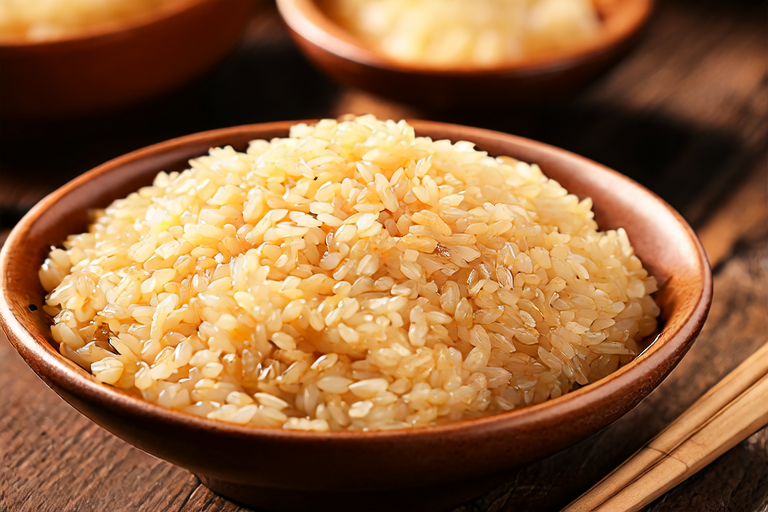Elevating Rice: The Ultimate Eat with Rice Experience
Introduction:
Rice is one of the most versatile and beloved grains in the world, serving as a staple food for billions of people across diverse cultures. From Asia to Africa, rice has been an essential part of many traditional cuisines, offering both cultural significance and culinary versatility. This article will explore the art of elevating rice to create an ultimate dining experience, delving into various techniques, ingredients, and recipes that can transform a simple bowl of rice into a gourmet feast.
The Science Behind Perfect Rice
To truly elevate rice, it’s crucial to understand the science behind perfect cooking. Rice consists of three main components: starch, protein, and moisture. Starch plays a pivotal role in determining texture and flavor. Amylose and amylopectin are two types of starch found in rice, each contributing differently to the final texture. Amylose gives rice a firmer texture, while amylopectin results in a softer, stickier consistency. The ratio of these starches determines whether the rice is suitable for dishes like sushi (high amylopectin) or paella (higher amylose).
Water-to-rice ratios and cooking methods significantly impact the outcome. Traditional boiling and steaming methods are commonly used, but each has its advantages and drawbacks. Boiling rice often leads to a softer texture due to prolonged exposure to water, whereas steaming preserves more nutrients and results in a fluffier texture. For optimal results, consider using a rice cooker or pressure cooker, which ensures even heat distribution and precise moisture control.
Choosing the Right Rice
The type of rice you choose can dramatically affect your dish’s success. Long-grain rice, such as basmati or jasmine, is ideal for pilafs and salads, offering a light, fluffy texture. Medium-grain rice, like Arborio, is perfect for risottos and paellas, providing a creamy yet firm bite. Short-grain rice, including sushi rice and glutinous rice, is best for dishes requiring a sticky, cohesive texture, such as sushi rolls or sticky rice.
In addition to grain length, consider factors like origin and processing. Rice from different regions may have distinct flavors and textures. For example, Japanese Koshihikari rice is known for its delicate aroma and sweet taste, making it ideal for sushi. Similarly, Thai jasmine rice offers a floral fragrance and slightly sticky texture, perfect for curries and stir-fries. Organic and heirloom varieties are also worth exploring for their unique flavors and sustainability.
Enhancing Flavor through Seasoning and Aromatics
To truly elevate rice, seasoning and aromatics play a vital role. Salt is often overlooked but is essential for balancing flavors and enhancing the natural sweetness of rice. For long-grain rice, a pinch of salt per cup of uncooked rice is sufficient. However, for short-grain rice, a slightly higher ratio may be needed to achieve the desired flavor profile.
Aromatics, such as onions, garlic, and herbs, can significantly enhance the flavor of rice. Sautéing these ingredients before adding the rice can infuse the grains with complex flavors. For example, sautéing shallots and garlic in olive oil adds a subtle sweetness and depth to Italian-style risotto. Similarly, adding fresh herbs like cilantro or basil can bring a burst of freshness to Southeast Asian dishes.
Spices and condiments also contribute to the overall flavor profile. Cumin, coriander, and turmeric add warmth and complexity to Indian-style rice dishes, while soy sauce, fish sauce, and lime juice enhance the umami and acidity in Asian-inspired recipes. Experimenting with different combinations can lead to unexpected and delightful results.
Techniques for Fluffy and Flavorful Rice
Mastering cooking techniques is key to achieving perfectly fluffy and flavorful rice. One popular method is the absorption method, where the rice is cooked in a measured amount of water until all liquid is absorbed. This technique works well for long-grain and medium-grain rice. To ensure even cooking, rinse the rice under cold water before cooking to remove excess starch. Soaking the rice for 30 minutes can also improve texture and reduce cooking time.
For short-grain rice, such as sushi rice, the rinsing and soaking steps are crucial. Rinsing removes excess starch, preventing the rice from becoming too sticky. Soaking helps soften the grains and ensures even cooking. After cooking, the rice should be allowed to rest for about 10 minutes before fluffing with a fork. This resting period allows the grains to absorb any remaining moisture and prevents them from breaking apart when fluffed.
Another technique worth exploring is the pilaf method, where rice is first toasted in oil or butter before adding liquid. This method adds a nutty flavor and enhances the texture. It’s particularly effective for aromatic rice dishes like biryani or pilau. Toasting the rice also helps prevent the grains from clumping together, resulting in a fluffier final product.
Creative Rice Dishes
Now that we’ve covered the basics, let’s dive into some creative rice dishes that elevate this humble grain to new heights. Start with a classic Spanish paella, featuring saffron-infused rice, succulent shrimp, tender chicken, and crisp vegetables. The combination of bold flavors and textures creates a memorable dining experience. Alternatively, try an Indian biryani, layered with fragrant spices, tender lamb, and caramelized onions. The slow-cooked process ensures every grain absorbs the rich, spicy flavors.
For a healthier option, consider a Mediterranean quinoa salad, combining fluffy quinoa, juicy tomatoes, fresh cucumbers, and tangy feta cheese. Quinoa, a nutrient-rich seed, provides a satisfying alternative to traditional rice. Add a drizzle of olive oil and a squeeze of lemon for brightness. Another fantastic choice is a Thai coconut rice, where fragrant jasmine rice is cooked in coconut milk, garnished with crispy shallots and fresh herbs. This dish showcases the versatility of rice and highlights the importance of quality ingredients.
Finally, don’t forget about dessert! A sweet rice pudding, made with creamy arborio rice, milk, and vanilla, topped with a sprinkle of cinnamon, offers a comforting end to any meal. For those with a sweet tooth, consider experimenting with flavors like cardamom, rosewater, or chocolate to create unique and indulgent desserts.
Conclusion
Elevating rice to create an ultimate dining experience requires attention to detail, creativity, and a deep understanding of the grain’s properties. By mastering cooking techniques, choosing the right variety, and enhancing flavors through seasonings and aromatics, you can transform a simple bowl of rice into a gourmet masterpiece. Whether you’re preparing a classic paella or a decadent rice pudding, the possibilities are endless. Embrace the versatility of rice and let your culinary imagination run wild!


